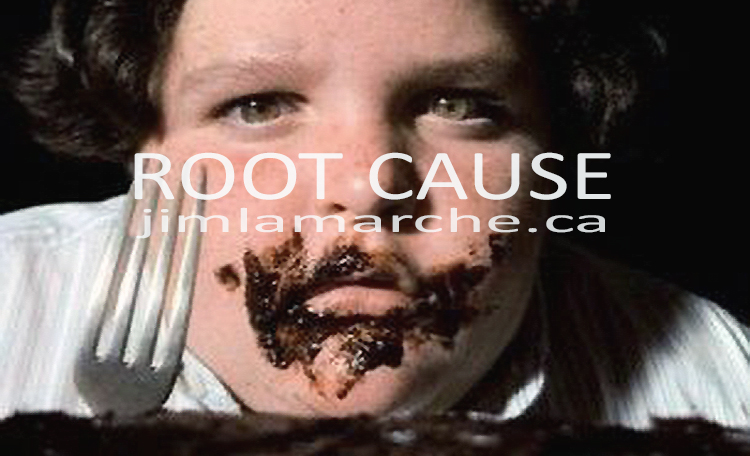.

INTRODUCTION:
Welcome!I originally launched MAE in Canada as a blog in 2008, with the intention of levelling out the playing field – to shine a spotlight on the misconceptions surrounding Canadian post-secondary music/media arts education (specifically) and to expose some of the myths that schools project to boost enrollment (profit). Education systems (overall) are not necessarily benevolent and are all too often insular, myopic, detached and self-absorbed. It has been my mission to clarify and support the curious individual, and to provide assistance with pertinent accurate information from which to plan, proceed and succeed.
Students under 25 tend to do better in the public school system (Community College & University). It’s slower and more grounded in the elementary/ secondary mind-set (unionized), and those 25 or over tend to do better in Private (PCC) Colleges which are fast track programs (1 year on average) but costs much more. I can’t honestly say that one is better than the other – only different and distinctly relevant to those with unique requirements.
There are many more media arts education options out there; these are the only schools & programs that I would recommend/seriously worth looking at. If a school is not on this list, then I would suggest proceeding with caution and any music/media arts school that tells you that there are “lots of jobs” for graduates of their program, are essentially falsifying the facts (coercing the registration). I have written a number of post-secondary education related articles in the Blogroll. CONTACT/MAE.
Below are my top 10 media arts schools in Canada.
email: jimlamarche@sympatico.ca
.
School Ratings: (PCC) Private Career College, (PUB) Public University or Community College
1. RYERSON UNIVERSITY – RTA/DMZ – School of Media http://www.ryersonrta.com – IMA School of Image Arts – (PUB) – Toronto (A+) http://imagearts.ryerson.ca/ I taught audio production in RTA from 1991 – 94 at the Rogers Communications Centre when it was still Ryerson Polytechnical Institute, just before it became a university and I have worked with dozens of graduates since, reflecting on their experience there in RTA, having met most of them in an industry capacity after they finished. This is a Media Arts degree program over 4 years (BA/BFA/MA) and is very intensive and can be followed up in their Digital Media Zone where those with a unique vision can incubate and fertilize. Ryerson has the best post-secondary media arts program in Canada and is a model for the future in MAE as a whole. Unlike most of the other schools here in this report, RTA focuses more on servicing the “broadcast/digital media” sector, where thousands of RTA graduates are now fully integrated into successful careers in a different quadrant of media arts but still crossing over into the audio/visual production arena. In 2011 they changed the name from “Radio and Television Arts” to “RTA School of Media” out of necessity, as the former name had become an anachronism, just like the word “video” or the term “multi-media” had become. I think they should have just dropped the whole RTA thing completely and just called it the Ryerson School of Media or RSM. It’s my guess that they kept the RTA tag out of respect for recent graduates. Regardless, RTA / Ryerson is still an important contributor to the media arts education system in Canada. If my son/daughter was interested in doing something in media arts, I wouldn’t hesitate to support them to do Ryerson, if only for the reason that there is an elevated probability that he/she will integrate into a successful professional media related career later on. The root structure is 70+ years deep at Ryerson (RTA started in 1949) and is very solid which counts for a lot especially IF – a graduate wants to “connect” with the real world. Ryerson is a testament of the public education sectors intrinsic value – tried and true.
2. OCAD UNIVERSITY/CFC MEDIA LAB – DFI (Digital Futures Initiative – MA, MDes, MFA) – (PUB) Toronto (A) https://www.ocadu.ca/academics/graduate-studies/digital-futures.htm This is relatively new on the grid for me and designed for those with elevated entrepreneurial spirit. Formerly The Ontario College of Art and Design, now OCAD U, (founded in 1876) recently partnered with CFC (Canadian Film Centre) in 2013, on the Digital Futures initiative, allowing participants to cross-pollinate in any number of multi-disciplinary forums, in a similar way that the DMZ/Digital Media Zone (incubator system) mentors Ryerson students post graduate. Best part is that participants can earn a Masters degree in Media Arts and Design from OCAD in a system that’s all about invention and innovation. I’m thinking the way to go is to start at OCAD then finish at CFC (post grad), as the Centre is more about mentoring/activation than traditional pedagogical activities (in Film/TV/Media/Music) http://cfccreates.com/programs/22-graduate-program-in-digital-futures. If one has a ‘vision’ for the future in digital media/design and is focused and ambitious? This is the place to be.
3. SENECA@YORK – School of Communication Arts – (PUB) – Toronto (A-) – http://www.senecacollege.ca/create/ Post secondary partnerships are all the rage right now and this one between York U and Seneca is one of the best combinations I’ve seen yet and the network keeps expanding exponentially. Communication Arts/media studies at Seneca@York is a progressive example of what’s going on in the public ed sector, from their world-renowned Animation Arts program where a long list of alumni now work on blockbuster feature films, down through their IMD/Interactive Media Design, DFI/Documentary Filmmaking Institute, Visual/Digital Photography/Illustration and Graphic Design programs. I like their IMP/Independent Music Production program which is a scaled down version of MIA/Music Industry Arts programs – Fanshawe/Centennial and Algonquin Colleges (London/Toronto/Ottawa) only because participants can get a quality taste of the (non existent) music biz in a fraction of the time and cost (translation: relatively harmless); all clean, honest and zero pretension – which is the best part of the public education sector. This is a website worth looking at simply because of all the amazing choices – not to mention the many bridging options / transfer options available with other colleges and universities world-wide.
4. HUMBER COLLEGE – Media Communications –https://mediastudies.humber.ca/programs/media-communications.html – Creative & Performing Arts –https://creativearts.humber.ca/ (PUB) – Toronto (B+) I really like the layout of Humber’s Media Communications and specifically the curricula that adapts to the participant’s agenda as it evolves. This 2 year (4 semester) starts with a primer and a solid look into a variety of media disciplines (photography, web design/content development, graphic/social media and videography) and the options splinter off in semester 2, 3 and 4 (work placement) and potential pathways into more advanced and focussed diploma programs later. The first semester is shared with the two-year Advertising and Graphic Design diploma, the three year Journalism advanced diploma, the two-year Advertising and Marketing Communications and the three-year Public Relations advanced diploma programs, allowing the flexibility to continue in any of these five programs in semester two. Humber’s Creative & Performing Arts and specifically it’s Bachelor of Music Program is in my opinion, Canada’s best music school. I’ve worked with dozens of grads as session players over the years in studios and they are all gifted and versatile musicians. All in all, Humber packs a big bang for the education buck in a public community college system that’s current and extremely viable.
5. HARRIS INSTITUTE – (PCC) – Toronto (B) – http://www.harrisinstitute.com – Welcome to the Private Career College – PCC sector/side of the equation and a swing into a music/audio focus (with the next 3 listed schools just below). Where there are a number of sketchy choices, there are only 3 notable options that can be taken seriously (in my opinion). This is a good one. Graduates from the Harris camp indicated the highest satisfaction rate and had the most positive reviews of all the schools reporting in the MAE 2013 Survey. John Harris left Trebas Institute in 1989 with his own vision and ideas on how audio production/arts management should be taught and was the second serious school of it’s kind to evolve in Toronto. I’m all about promoting good, grounded private colleges here only because there are so few. It’s truly unique – humble pie, and yet a powerful little institution giving it the edge. I think that Harris Institute is the best school of it’s kind in Canada.
6. OIART – (PCC) – London (B-) – http://www.oiart.org There’s a really good private school in London Ontario (founded in 1983), dedicated to music/sound/audio called the Ontario Institute of Audio Recording Technology that’s a must for this report. I spent the better part of a day there a few years ago, having played in a band with OIART’s founder Paul Steenhuis – 40 years ago, when/where he took me under his wing and taught me much of what I know about audio, brilliant man (just before launching his school), Paul is a gifted musician and engineer/producer from the UK and had/has a totally different approach. Although OIART is out in the boonies, its curricula, facilities/mandate are first rate in what I would call an intensive, fast-track, high quality audio education.
7. METALWORKS INSTITUTE – (PCC) – Mississauga (C+) – http://metalworksinstitute.com Founded more recently by Gil Moore from the 80′s “corporate rock” band Triumph and a few who migrated from Trebas Institute in 2005, starting their ‘elite’ (now ‘premier’) entertainment arts institution west of Toronto as an extension of the Metalworks Studios complex in Mississauga. They were looking to make a “splash” in the media arts education scene and they did just that – still “rockin” 15 years later and all because Gil Moore knows what he’s doing. Great facilities and a slick presentation compliment their experienced faculty in an impressive combination of well-kept analog and state of the art digital technologies (best of the new and old). Their affiliation/partnership with Avid/ProTools also makes them a serious choice, bringing with it a solid sense of meaningful history as well. Having finished a tour of duty there (2 years – 2007-2008), I am left with mixed feelings. MWI has an “authoritarian” approach to education – containment & control being their priority over freedom of original expression, and willingness to take in constructive criticism. Let’s just say that there’s a whole lot of ‘bling’ in the mix, in what now appears to be the quintessential ‘rock’ school. They have sponsored the “Mississauga Future Star” search (pretending that it’s relevant) and promote the platinum “dream” in exchange for big money. That being said; despite the reported short-comings, Metalworks has a good organizational structure, a solid curricula and some top notch players on board. It’s a tough school and those who graduate will have strong survival skills.
8. SHERIDAN COLLEGE – Media Arts Program – (PUB) – Oakville (C) – http://www.sheridancollege.ca Inspired by a couple of recent emails – and what appears to be an obvious need to address Sheridans efforts in media arts education. Sheridan College is a bona-fide public institution / Community College which means that what it basically comes down to is … what you see is what you get. The one thing I love about public education is that there is (for the most part) an absence of the many contrivances that are more obvious in the private career college (PCC) sector and a lot less pretentious posturing. Although Sheridan’s MAP is more humbly equipped than Fanshawe’s MIA (Music Industry Arts), the curricula is more grounded in the reality of the Media Arts landscape and more graduates integrate successfully because of it. This is largely due to the fact that it resides on the periphery of the GTA and there are more grads who find meaningful employment in a nearby cosmopolitan centre, whereas most grads from Fanshawe’s MIA program drift into oblivion because London is so far away and removed from any real meaningful media arts activity. At Sheridan you will be practicing the skills necessary to integrate into a more diverse arena where the game presents more options and opportunities. Another perk is that after completing the MAP, graduates can bridge into an Honours BFA degree at York University, or University of Toronto or earn a Bachelor of Communications degree at Griffith University in Brisbane Australia. Some people thrive in a slower community college environment – needing the time to formulate their plan. Others thrive in a shorter term PCC environment that moves faster and is more expensive – per education year. One has to go and evaluate carefully asking a lot of good questions. It’s all risky but if one has the passion and the willingness to sacrifice, then just maybe it’s worth it. All in all I’d say that if you’re young – have lots of time – and still live with mom and dad – Sheridan’s Media Arts Program may just right for you.
9. TORONTO FILM SCHOOL – RCC Institute of Technology – (PCC) – Toronto (C-) – http://www.torontofilmschool.ca I taught at the original Toronto Film School from 2005-2007, in their RAT – Recording Arts Technology program when it was in the CBC building as part of the IAOD – International Academy of Design before it closed 11 years ago. I visited the new TFS – 6 years ago, prompted by a few emails then, and have taken down my old review and re-wrote this. The original TFS was an unfortunate bi-product of the (publicly American owned and plagued) CEC/Career Education Corporation, having had 80+ campuses world-wide – and having operated the TFS at their now defunct IAOD campus here in Toronto (Wellington street at John). CEC dumped/closed IAOD/TFS and a dozen other schools throughout North America (after multiple class-action law suits), because of the massive head-aches around mismanagement – a huge mess. The original TFS was expensive and BAD! OK – this is the NEW TFS (version 2.0) and they would really prefer – that we don’t talk about the old one – now owned and operated by a Canadian owned PCC – RCC Institute of Technology. Bad karma aside, the new TFS looks and feels similar to the original but appears to be better managed. For now, I’m still skeptical, only because what I still see (years later) is a lot more hype and hope over projected outcomes and a private college diploma that doesn’t mean a whole lot in the industry. That said, there are certain people (mature students) who will likely do better at TFS than in a public college or university film program.
10. DURHAM COLLEGE – School of Media Art & Design (MAD) – (PUB) – Oshawa (D) – http://www.durhamcollege.ca/academic-schools/school-of-media-art-design
I’ve never been to Durham College (the only school in this report where I can say that), but I’ve had the good fortune of meeting a few graduates who were in the MAD program there and I feel that their input is worth echoing. I’ve also spent some time looking carefully at the web-site/reels etc, so I’m confident that this is pretty accurate. It’s a community college in Oshawa, so I’m thinking there’s the predictable public post-secondary lag, in that it’s unionized – professors earning 6 figures/year – in a 25hr work-week with 4 months off every summer (yawn) – ok you get the picture. That being said; There’s a wide range of media related programs (21 in all) that you would never guess coming from a college at such a distance and so off the beaten track – almost like a chinese buffet (on the highway) … where some dishes are going to taste fresh and others that you leave on your plate after one bite – everything from Journalism to Graphic/Web – Gaming/Animation, Digital Photography/Video Production to Music Business Administration (guessing that’s a waste of time), but all feeling grounded and hinting at a big bang for the education buck. Ok, let’s just say that if I had a son or daughter (just finished high-school) – still living at home, in that neck of the woods, and REALLY wanted to do media arts – I’d send him/her there only because it’s convenient, cheap and looks pretty decent. Not a lot to lose here (financially) and maybe a great appetizer for a more serious education experience later on.
email: jimlamarche@sympatico.ca









